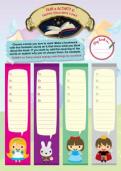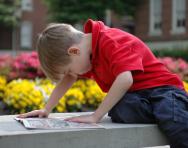How to create a reading-friendly home

Switch off the screens and help make reading a fun, relaxing and engaging pastime for your child by implementing these expert tips from primary school teacher and parent Phoebe Doyle.
Creating a welcome reading environment doesn’t mean turning your home into a library! Small changes can make a big difference to how your child views reading, and help them develop a love of books. For instance:
- Every day, ask your child to tell you about one interesting thing they’ve read.
- Make scrapbooks or storybooks with your child (to remind them of a holiday or outing you’ve been on, say).


Claim A FREE Book Reviews Activity Pack!
- A huge collection of creative writing & reading comprehension resources
- Explore texts, deepen understanding, share opinions
- For Year 1 to Year 6
- Openly read in front of your child – explain in ‘child-speak’ what you are reading about, whether you are enjoying it, etc.
- Have plenty of books on topics they are interested in available around the house (raid your local library’s children’s non-fiction shelves).
When you’re looking at books together, educational psychologist Priya Dhingra recommends these practical tips for great reading sessions:
- Find somewhere quiet to read, away from distractions.
- Choose a regular time to read – this could be after snack time in the evening, after dinner or before bedtime.
- If your child starts to get frustrated, try again the next day.
- Stop while your child is eager to continue. Motivation is soon lost with long periods of the same activity.
- Before beginning to read, spend some time looking at the pictures and discuss what the story might be about. Ask your child what key words might be found inside the book.
- When you do start reading a book together, begin by reading out loud, matching the speed of your child.
- Encourage your child to point to the words as they read to you. It is important to choose a book where your child can read at least 75% of the words in the book.
- When you’re reading together and an error occurs, correct it immediately – have your child repeat the correction, and then continue reading together.
- As your child experiences success and their confidence grows, encourage them on to the next reading step – reading alone.
- Ask questions to encourage your child to think about the book or pictures in the book. At natural stopping points, talk with your child about the meaning of the text – what’s happening, or what’s been learned. Encourage your child to comment or ask questions.
- Ensure that the whole process is positive by praising your child in specific terms for good reading. For example, “That was a hard word. You did a good job sounding it out!” Consider a reward system such as stickers for every page read well.
- Understand what phonics and sounds are so you can help your child as they sound out new words. For more ideas on getting the most out of reading with kids, find out how you can bring books to life and help your child develop a love for reading.

Give your child a headstart
- FREE articles & expert information
- FREE resources & activities
- FREE homework help
By proceeding you agree to our terms and conditions. For information on how we use your data, see our privacy policy. You will receive emails from us but can opt out at any time.








